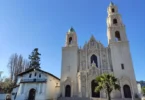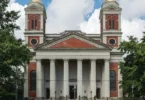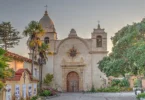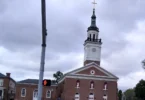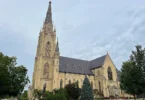Introduction
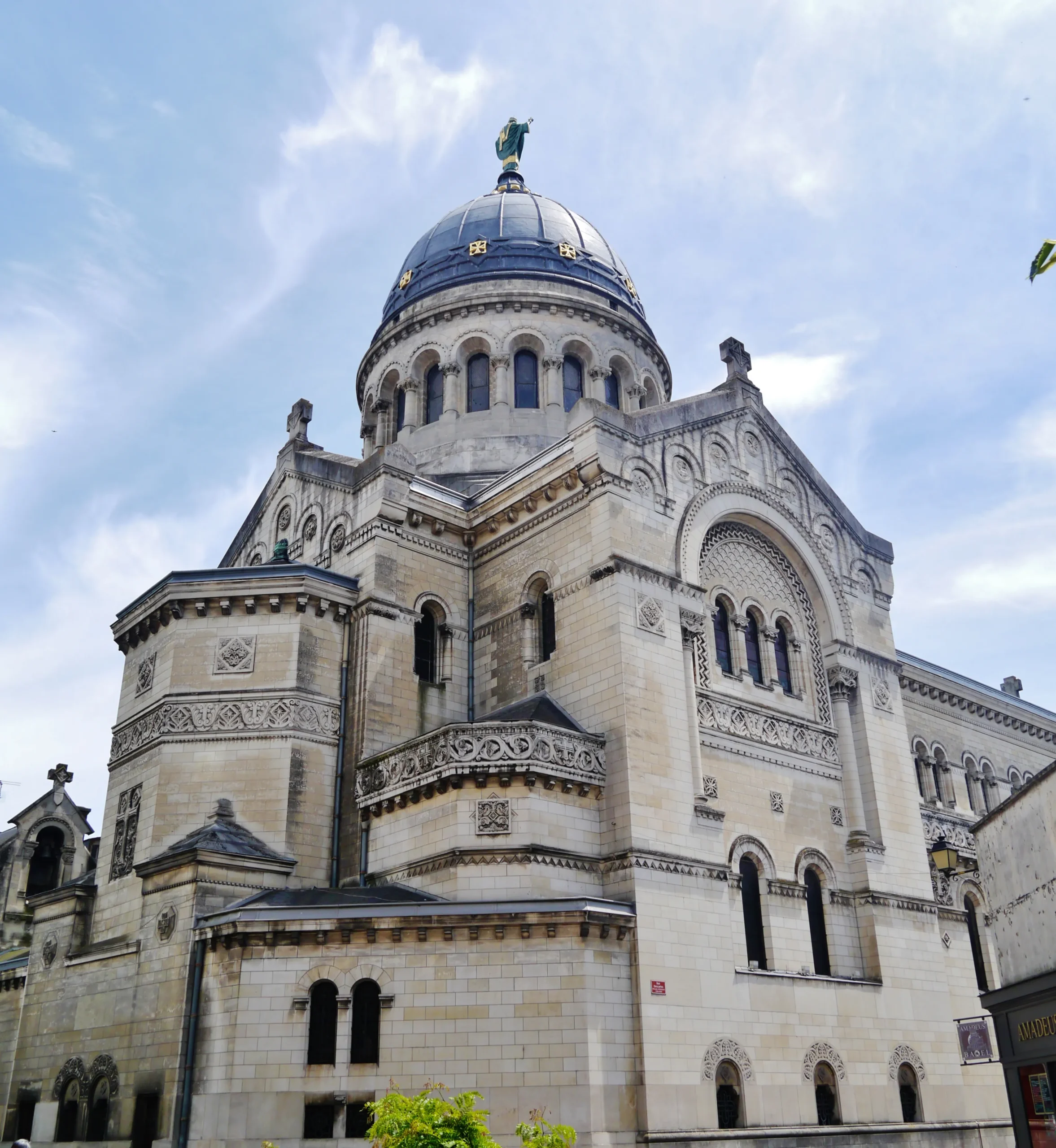
The Basilica of St. Martin is a Roman Catholic basilica dedicated to Saint Martin of Tours, over whose tomb it was built. It is located in Tours, France.
The first basilica was established here in the 5th century (consecrated in 471) on the site of an earlier chapel. It was at first served by a community of monks under an abbot, the Abbot of St Martin, who between 796 and 804 was Alcuin, the adviser of Charlemagne. Shortly before this the monastic establishment was changed to a collegiate church manned by a community of canons, but the office and title of abbot persisted. The mediaeval basilica was completely demolished during the French Revolution. The present church was built between 1886 and 1924 by French architect Victor Laloux in a neo-Byzantine style, on part of the site of the original basilica which was repurchased by the Church. It was dedicated on 4 July 1925.
Tours, the former capital of Touraine, suffered extensive destruction during WWII. However, the historical district was meticulously rebuilt stone by stone around the Basilica of Saint-Martin.
Tours is regarded as the cradle of French Christianity and remained under the patronage of French kings for centuries. It was also a focal point of territorial disputes between the French and English during the Middle Ages. Its history spans over 2000 years.
It began as a Gallic village and evolved into the Gallo-Roman city of Caesarodunum—Caesar’s Hill—a prosperous settlement that extended over 40 hectares. The inhabitants lived peacefully until the barbarian invasions of the 3rd century AD, which led them to demolish their amphitheater to construct a rampart. Remains of this wall are still visible near the cathedral.
Caesarodunum was the center of the Roman province that included the present-day regions of Touraine, Maine, Anjou and Brittany. The city was renamed Turones in 372 AD.
St. Martin was a Roman legionary who converted to Christianity and became famous for splitting his cloak in half to share with a beggar. He founded his first monastery in Ligugé in Poitou and became the bishop of Tours in 372 AD. This led to Turones being known as the City of St. Martin.
A talented preacher, St. Martin dedicated his life to converting people, destroying pagan idols and temples, and replacing them with chapels and churches. He later established the monastery of Marmoutier near Tours. He died in Candé near Saumur in November 397 AD.
Following his death, a dispute arose between the monasteries of Ligugé and Marmoutier over his burial place. The monks of Marmoutier stole his coffin at night while the monks of Ligugé slept and transported it back to Tours by boat.
During this journey, an extraordinary event occurred: the trees on the riverbanks miraculously began to bloom in the middle of autumn. This phenomenon, resulting from exceptional mild temperatures that stimulate very early flowering, has since been known as Été de la St. Martin, or St. Martin’s Summer.
A Major Religious Centre Under the Patronage of the French Kings
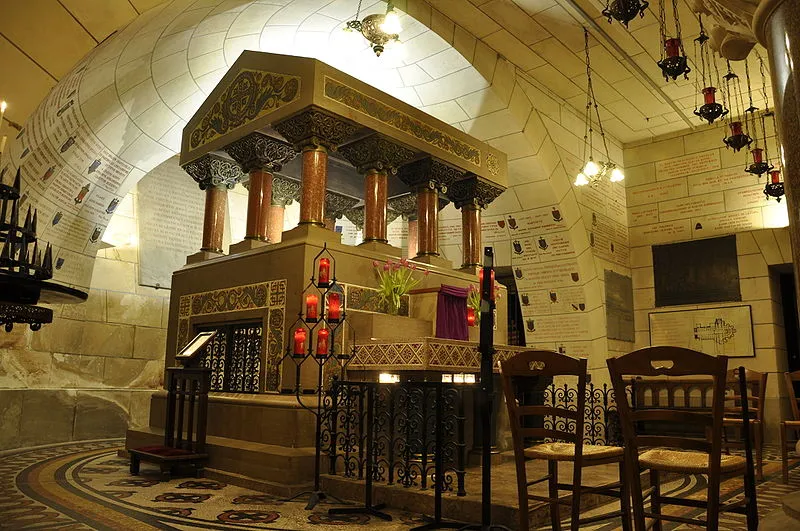
The Basilica of Saint Martin was erected in 471 AD over the tomb of St. Martin. Around 496 AD, Clovis, the first king of France, visited the tomb to meditate. He vowed to convert to Christianity if he won his battle against the Germanic tribe Alemanni. After his victory at Tolbiac and subsequently defeating the Visigoths at Vouillé near Poitiers, Clovis was baptized in 498 AD.
In gratitude for his victories, Clovis returned to Tours to thank St. Martin and offered financial and material support to the monastery. He also recognized St Martin as the patron saint of France. This act of devotion initiated a tradition of royal patronage that was faithfully honored by Clovis’s descendants. As a result, the city flourished, becoming a prosperous city and a significant religious center.
Gregory of Tours
The city’s prestige increased with the arrival of Grégoire, a young priest from an aristocratic Gallo-Roman family in Auvergne. Grégoire, suffering from poor health, prayed at the tomb of St. Martin and was miraculously cured. In gratitude, he dedicated his life to the saint and settled in the Abbey of Tours, becoming its bishop ten years later.
Known as Gregory of Tours (538-594), he was not only a devout religious leader but also a prominent historian. He wrote several books, with his most famous work being “The History of the Franks.” This seminal text remains the primary source of information on the Merovingian dynasty.
Hugues Capet, Honorary abbot of St. Martin
The Norman invasions of the 9th century brought an end to this brilliant era, as the city was sacked. However, the relics of St. Martin were safely transported to Auvergne. By the early 10th century, the new town of Martinopolis (later known as Châteauneuf) developed outside the cathedral’s enclosure.
In 987, Hugues Capet, Count of Orléans and Honorary Abbot of St. Martin, was elected King of France. His surname, Capet, was derived from St. Martin’s cloak (Cappa in Latin). Capet and his descendants honored their role as protectors of the Christian Church by endowing the abbey with generous donations of money and fiefdoms, allowing it to remain a major spiritual and intellectual center. Tragically, in 997, both the abbey and Martinopolis were completely destroyed by fire.
St. Martin Basilica
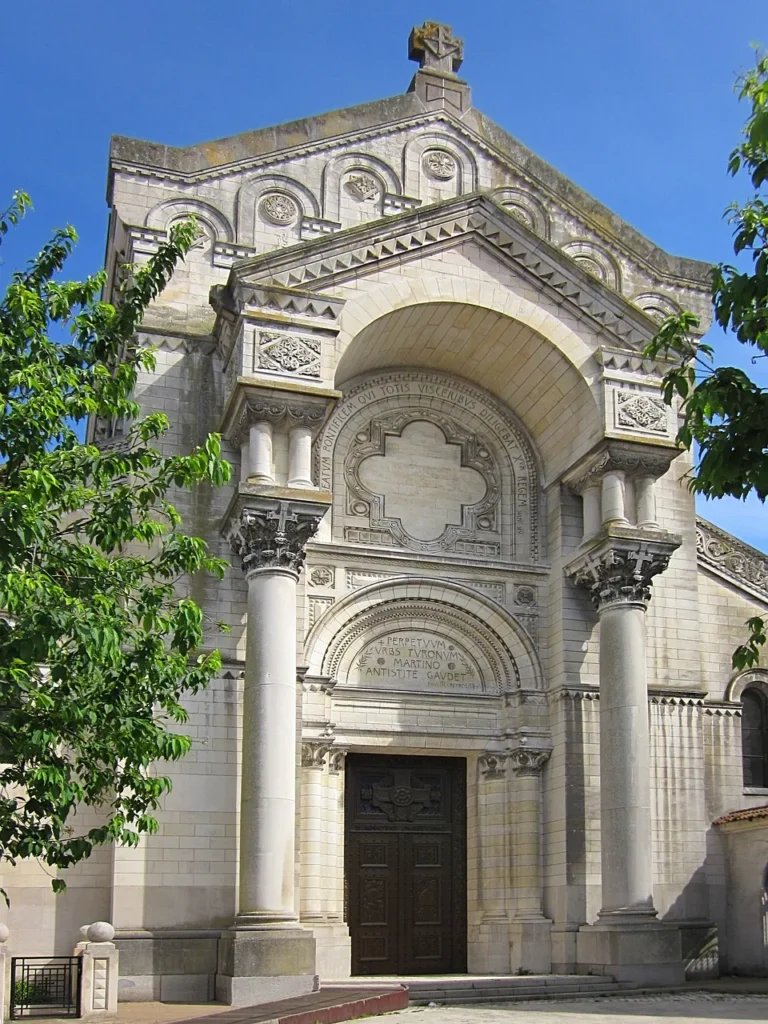
In the 9th century, the Normans ransacked the chapel built over the tomb of Saint Martin. The basilica that was built on the same spot two centuries later was enlarged in the 13th century, and sacked by the Protestants during the Wars of Religion!
In the 19th century, the ruins were demolished to make way for the Rue des Halles, except for two large towers that were left standing, the Tour Charlemagne and the Tour de l’Horloge (Clock Tower). The current Byzantine Nouvelle-Basilique-St-Martin was built between 1886 and 1924 on the transept of the old basilica, and the shrine of St. Martin placed in the crypt.
The adjacent Chapelle St. Jean, which houses the Musée St. Martin, relates the history of the old basilica and St Martin’s legacy
Mediaeval Basilica
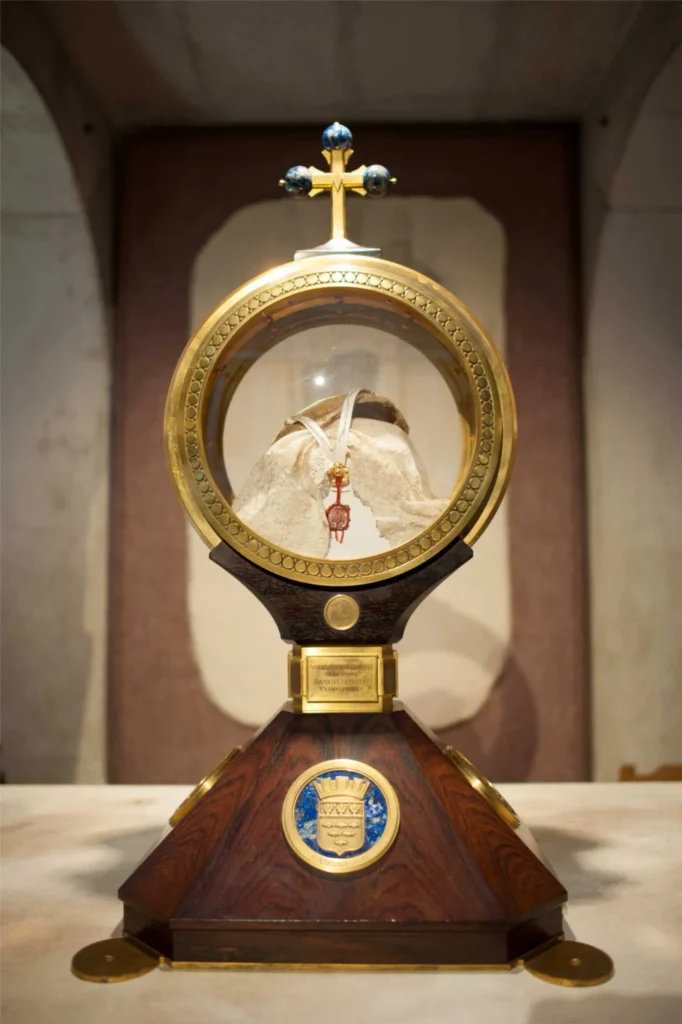
The Abbey which developed around the shrine of St Martin at Tours became one of the most prominent and influential establishments in medieval France. Charlemagne awarded the position of Abbot to his friend and adviser Alcuin. At this time the abbot could travel between Tours and the court at Trier in Germany and always stay overnight at one of his own properties. It was at Tours that Alcuin’s scriptorium (a room in monasteries devoted to the copying of manuscripts by monastic scribes) developed Caroline minuscule, the clear round hand that made manuscripts far more legible.
In later times the abbey was destroyed by fire on several occasions and ransacked by Norman Vikings in 853 and in 903. It burned again in 994, and was rebuilt by Hervé de Buzançais, treasurer of Saint Martin, an effort that took 20 years to complete. Expanded to accommodate the crowds of pilgrims and to attract them, the shrine of St. Martin of Tours became a major stopping-point on pilgrimages. In 1453 the remains of Saint Martin were transferred to a magnificent new reliquary donated by Charles VII of France and Agnes Sorel.
During the French Wars of Religion, the basilica was sacked by the Protestant Huguenots in 1562. It was disestablished during the French Revolution. It was deconsecrated, used as a stable, then utterly demolished. Its dressed stones were sold in 1802 after two streets were built across the site, to ensure the abbey would not be reconstructed.
Current Basilica
In 1860 excavations by Leo Dupont (1797–1876) established the dimensions of the former abbey and recovered some fragments of architecture. The tomb of St. Martin was rediscovered on December 14, 1860, which aided in the nineteenth-century revival of the popular devotion to St. Martin.
After the radical Paris Commune of 1871, there was a resurgence of conservative Catholic piety, and the church decided to build a basilica to St. Martin. They selected Victor Laloux as architect. He eschewed Gothic for a mix of Romanesque and Byzantine, sometimes defined as neo-Byzantine. The new Basilique Saint-Martin was erected on a portion of its former site, which was purchased from the owners. Started in 1886, the church was consecrated 4 July 1925.
Interior
It is a large nave with two side-aisles ; the archways rest on 14 monolithic columns of polished granite from Vosges, each surmounted by illustrated capitals . These naves are covered by a decorative frame , inspired by early Christian churches. The side-aisles end in two chapels with mosaics on a gold background.
The Great High Altar
Stands above the site of the tomb. The altar itself, donated by Eugène Gouin, is supported by 4 marble columns and small columns of porphyry. The altar contains an important relic of St Martin, part of his head, hence the nickname given to this altar: “the head’s altar”. Above the altar is a ciborium , designed by the artist Aymard Verdier, inspired by a 13 th -century drawing. In the middle, a small shrine houses the relics of Saint Martin.
The present Basilica (1886-1924), designed by the Touraine architect Victor Laloux, is built on the tomb of St Martin (in the crypt) which was discovered in 1860 in the cellars of houses built on the site of the old Basilica. Mass every day at 11.00 a.m. Illumination.
Feast Day
Feast Day : 11th November
Saint Martin’s Day or Martinmas (obsolete: Martlemas), and historically called Old Halloween or Old Hallowmas Eve, is the feast day of Saint Martin of Tours and is celebrated in the liturgical year on 11 November.
Church Mass Timing
Monday, Tuesday, Wednesday & Friday : 8:30 AM
Thursday : 8:30 AM and 6:30 PM
Saturday : 4.00 PM
Sunday Masses :
Q’eqchi Mass : 7am lower Church
Spanish Mass : 10 AM
English Mass : 12 PM
Church Opening Time:
Monday : 7:30 am–9 pm
Tuesday : 7:30 am–9 pm
Wednesday : 7:30 am–9 pm
Thursday : 7:30 am–9 pm
Friday : 7:30 am–9 pm
Saturday : 7:30 am–9 pm
Sunday : 7:30 am–9 pm
Contact Info
Address :
7 Rue Baleschoux, 37000 Tours, France
Phone : +33 2 47 05 63 87
Accommodations
Connectivities
Airway
Marigot Airport (SFG) to Basilica of Saint Martin, Tours, Distance 8 min (7.2 km)
Railway
Gare de Tours Rail Station to Basilica of Saint Martin, Tours, Distance 7 min (1.9 km) via Rue Sebastopol.


